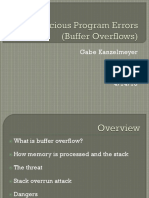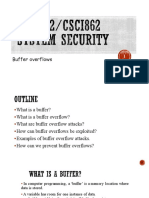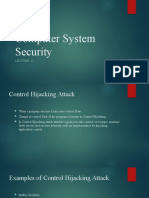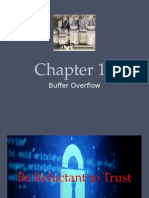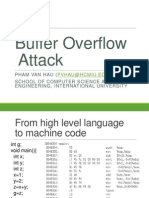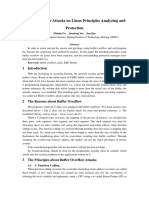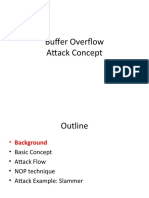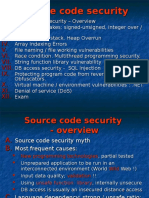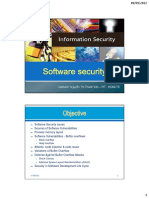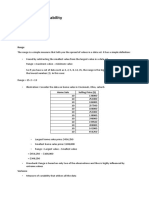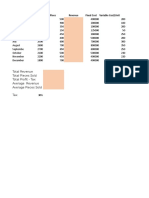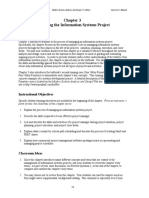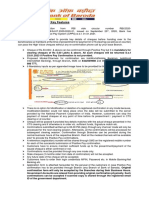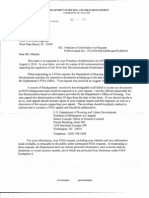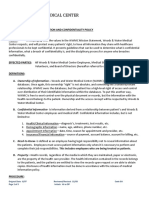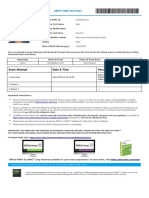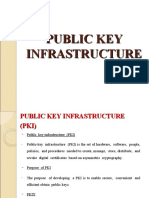0% found this document useful (0 votes)
62 views18 pagesProgram Errors
The document discusses buffer overflow attacks and how they can be exploited to compromise systems. It explains how memory is organized and how the stack stores return addresses. An attacker can overwrite a return address on the stack to redirect program flow to injected malicious code. The document outlines the steps an attacker would take to discover a vulnerability, craft an attack, and execute arbitrary code with system privileges. Defenses include safer programming practices and library/compiler techniques to detect illegitimate code.
Uploaded by
gladysann churchCopyright
© © All Rights Reserved
We take content rights seriously. If you suspect this is your content, claim it here.
Available Formats
Download as PPTX, PDF, TXT or read online on Scribd
0% found this document useful (0 votes)
62 views18 pagesProgram Errors
The document discusses buffer overflow attacks and how they can be exploited to compromise systems. It explains how memory is organized and how the stack stores return addresses. An attacker can overwrite a return address on the stack to redirect program flow to injected malicious code. The document outlines the steps an attacker would take to discover a vulnerability, craft an attack, and execute arbitrary code with system privileges. Defenses include safer programming practices and library/compiler techniques to detect illegitimate code.
Uploaded by
gladysann churchCopyright
© © All Rights Reserved
We take content rights seriously. If you suspect this is your content, claim it here.
Available Formats
Download as PPTX, PDF, TXT or read online on Scribd
/ 18
